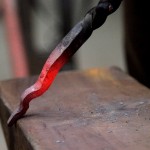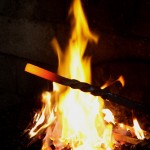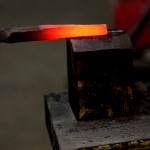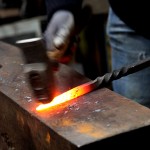Unveiling the secrets of iron and metalwork in our workshop…
Historically, in rural areas, blacksmiths were the only professionals who had the skills and technical resources needed to work iron.
Their practical ironwork services enabled them to fit horseshoes and create various decorative and ornamental elements (grilles, balconies, bannisters, brackets, etc.)
Metal was heated in the forge, until it was hot enough to be shaped using an anvil. Each part was then hammered into shape using templates.
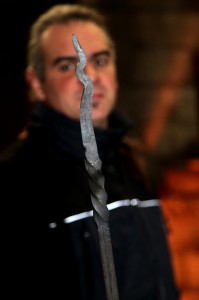 This practical approach to ironwork was occasionally associated with more artistic creations. In response to demand from the nobility and wealthy bourgeoisie, blacksmiths began creating unique objects intended to decorate stately homes and churches.
This practical approach to ironwork was occasionally associated with more artistic creations. In response to demand from the nobility and wealthy bourgeoisie, blacksmiths began creating unique objects intended to decorate stately homes and churches.
In the 18th century, ornamental gazebos began to grace the royal gardens. The expertise of talented blacksmiths was also leveraged to create grilles for palaces and stately homes.
Over time, wrought iron has been used in various styles of decorative artwork, in numerous symbolic representations (Rococo, Art Nouveau, Art Deco, Modern Art).
The craftsmanship of artists like Hervé and Sandrine Masin perpetuates this heritage and the skills of their predecessors, to ensure that this timeless art remains central to our daily life.




